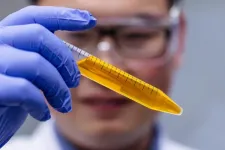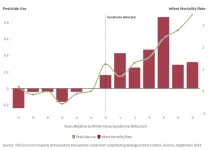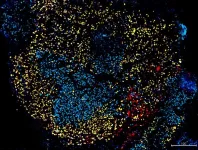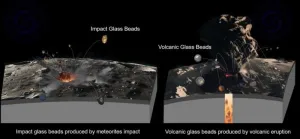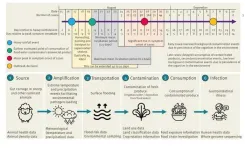(Press-News.org) The simple act of observing others cope with a traumatic experience can increase our capacity for resilience and prevent the pathological states that can result from it, notably depression. Neuroscientists at UNIL have demonstrated the presence of this “emotional contagion” in mice, and successfully deciphered its mechanism. The neurotransmitter serotonin, released in a brain structure called the habenula, has been shown to be the key to resilience. This discovery, published in Science, revisits the role of serotonin and opens up new perspectives, notably for understanding depression and its treatment.
Human beings have the ability to cope with aversive experiences while continuing to live a normal life. This ability is known as resilience. However, some individuals are more vulnerable to traumatic events. They develop a loss of motivation and drive, which are hallmarks of depression. Promoting resilience in such people at risk could counter their vulnerability and function as a preventive practice against the possible emergence of a pathological state. But there are still too many unknowns for resilience to be used as a preventive practice. “There is a lack of clinical tools or underlying mechanisms to promote this type of conditioning capable of fostering a resilient reaction as in healthy people”, says Manuel Mameli, Associate Professor at the Department of Fundamental Neurosciences at the Faculty of Biology and Medicine, University of Lausanne (UNIL). To achieve this, we need to understand the brain function behind adversity – a challenge that Manuel Mameli's team has successfully undertaken.
Observing for self-preservation
To explore the underlying brain mechanisms, the UNIL neuroscientists first designed an experimental model capable of promoting resilience and measuring its consequences on the appearance of pathological traits following trauma. “We started from the recognized fact that simply observing the emotional experiences of others helps us to learn from them. It's a phenomenon known as emotional contagion, and it engages resilience”, explains Manuel Mameli.
To achieve this, an “observer” mouse was placed close to a mouse subjected to small electric shocks to the paws. This simple task protected the majority of the observer mice from developing pathological states of depression when they were subsequently exposed to this unpleasant experience themselves. This was not the case for mice who had not witnessed the traumatic experiences of their fellow companions. The scientists concluded that the simple act of observing others cope with a traumatic experience increases one's own capacity for resilience and helps guard against possible pathological consequences.
Serotonin, the resilience molecule
Following the discovery of this behavioral principle, the neuroscientists successfully identified the brain mechanism mediating it. They focused on the habenula, a tiny cerebral structure located at the heart of the brain, known to participate in emotional and sensory processing, and to regulate neurotransmitters associated with depression, notably serotonin. To achieve this, they specifically developed imaging tools to track this molecule in mice. “It is very difficult to measure the variation of serotonin in the brain. Thanks to a biosensor developed by Yulong Li of Peking University, co-author of the study, we were able to identify the key mechanism”, adds Manuel Mameli.
Recordings made during behavioral experiments revealed that emotional contagion coincided with a lasting change in the functioning of neurons in the habenula, together with an increase in serotonin release in this region. More specifically, according to Sarah Mondoloni, postdoctoral fellow in Manuel Mameli's laboratory at UNIL and first investigator of the study, “it is the dynamics of serotonin that change during this task, and this is the key finding of our study”. By artificially altering the dynamics of serotonin levels, the research team was able to demonstrate that its non-increase not only undermines the long-lasting neuronal activity change in the habenula, but also the ability of mice to foster resilience following adversity.
Re-exploring the mechanisms of depression
A common denominator between the mechanism of resilience after adversity discovered in this study and that of depression is serotonin. Many antidepressants target serotonin to increase its concentration in the brain. Here, neuroscientists show that a transient, localized increase in the habenula can prevent the onset of apathetic behavior following a traumatic experience. “This property of the serotonergic system is an exciting information for neuroscientists. But our discovery could also pave the way for new therapeutic applications relevant to depression, for example by testing existing pharmacological serotonin activators, including psychedelic therapies that stimulate the serotonin system. Their use could be refined to achieve better therapeutic approaches”, concludes Manuel Mameli.
END
Serotonin to bounce back from adversity
2024-09-05
ELSE PRESS RELEASES FROM THIS DATE:
Yellow dye solution makes tissue transparent on living animals
2024-09-05
In a pioneering new study, researchers made the skin on the skulls and abdomens of live mice transparent by applying to the areas a mixture of water and a common yellow food coloring called tartrazine.
Dr. Zihao Ou, assistant professor of physics at The University of Texas at Dallas, is lead author of the study, published in the Sept. 6 print issue of the journal Science.
Living skin is a scattering medium. Like fog, it scatters light, which is why it cannot be seen through.
“We combined the yellow dye, which is a molecule that absorbs most light, ...
The collapse of bat populations led to more than a thousand infant deaths
2024-09-05
Bats are considered a natural pesticide, widely relied on by farmers as an alternative to chemical pesticides to protect their crops from insects. But since 2006, many bat populations have collapsed in counties in North America due to an invasive fungus found in the caves bats use during the day and throughout winter that causes what is known as White-Nose Syndrome. A new study in Science uses their sudden collapse to explore whether farmers turned to chemical pesticides, and whether doing so impacts human health. It finds that farmers did increase their pesticide use, leading to more than 1,000 infant deaths.
“Bats ...
Emotional contagion promotes resilience via serotonin release in mice
2024-09-05
“Bystander” mice that briefly watched other mice be harmed show fewer signs of behavioral despair when faced with their own harmful event, compared to mice who do not observe their fellow mice being harmed. The negative emotional contagion experienced by the bystander mice appears to build resilience against a depressive-like state, according to new research by Sarah Mondoloni and colleagues. Mondoloni et al. demonstrate that resilience in these mice requires an increase in serotonin release in a part of the brain called the lateral habenula. “These findings support the notion that, as is the case in humans, graded trauma can be resilience-promoting, enabling ...
Tiny glass beads indicate volcanism on the Moon 120 million years ago
2024-09-05
There were volcanic eruptions on the Moon as recently as 120 million years ago, according to a new analysis of a lunar sample collected by the Chang’e‑5 mission. Samples collected by the Apollo, Luna and Chang’e‑5 missions have previously shown there was widespread basaltic volcanism on the Moon extending from about 4.4 to 2.0 billion years ago. The new findings demonstrate that volcanism persisted much longer than was previously suspected, at least on smaller, more localized scale. Bi-Wen Wang, Qian W.L. Zhang and colleagues sorted through more than 3000 tiny glass beads they recovered from a lunar sample collected by Chang’e‑5, examining the bead’s ...
Injected fibroblasts transform to give thin skin a tough new identity
2024-09-05
The thick and tough skin on our palms and soles, called volar skin, stands up well under high-pressure conditions. This type of skin would be welcome on the limb stumps of amputees, since these points of contact with prostheses are covered in thin, non-volar skin that can be damaged over time. Now, Sam Lee and colleagues demonstrate that an injection of volar fibroblasts into non-volar skin in a group of human volunteers can promote volar features in the thin skin that last up to five months. Based on their analysis, Lee et al. are now enrolling amputees in a phase 2 clinical trial to further explore volar fibroblasts as a future ...
Novel study reveals how aging immune system fuels cancer growth, potentially opening new avenues for prevention
2024-09-05
New York, NY [September 5, 2024]—A novel study by researchers at the Icahn School of Medicine at Mount Sinai addresses a critical yet under-explored question in cancer research: Why is aging the biggest risk factor for cancer? The study reveals how an aging immune system spurs tumor growth, offering new insights into cancer prevention and treatment, especially for older adults.
Details on the findings were reported in the September 5 Online First Release of Science [DOI:10.1126/science.adn0327]. In preclinical models, the research team found that anakinra, a drug typically used for inflammatory conditions such as rheumatoid arthritis, can be repurposed to block harmful signals between ...
Researchers prove 120-million-year-old volcanism on moon
2024-09-05
Extensive geologic evidence of ancient volcanic activity can be found on the Moon, but how long this volcanism persisted has been unclear. However, Prof. LI Qiuli’s Lab at the Institute of Geology and Geophysics of the Chinese Academy of Sciences (IGGCAS) has recently identified three volcanic glass beads from lunar soil samples collected by the Chang’e-5 mission. Their research shows that the beads were formed 123±15 million years ago (Ma), thus representing the youngest lunar ...
State-by-state data boosts bird conservation planning
2024-09-05
ITHACA, N.Y. – New data summaries from the Cornell Lab of Ornithology’s eBird platform will help state wildlife planners assess the status of bird populations that live in or pass through their state – a crucial tool in protecting species.
A team of data scientists at eBird, the participatory science platform, has packaged summaries covering every bird species, in every state, and made them available online for free. These data summaries will help states prepare their federally required ...
Study on E. coli outbreak in the UK demonstrates increasing impact of climate change on public health and food security
2024-09-05
A study published in Eurosurveillance to investigate an outbreak of Shiga toxin-producing Escherichia coli (STEC) O157:H7 in the UK identified contaminated lettuce as the most likely source of the infection, and determined that heavy rainfall and flooding may have carried STEC from animal faeces to the lettuce crops. More heavy rainfall events are expected due to climate change in the future, leading to increased impacts on health and food security.
Ahead of Field Epidemiology Day 2024, this study demonstrates the value of field investigations in quickly responding to outbreaks, improving preparedness, and protecting public health, and possible ...
Using 3D imaging to transform plastic waste recycling
2024-09-05
In a global first, University of Waterloo researchers have used 3D imaging technology to understand the fine details of microplastics, paving the way for more effective methods of plastic waste recycling.
Micro and nanoplastics, tiny particles of plastic that come from the breakdown of larger plastic items, have become an exponentially worsening environmental crisis. Due to their difficulties in safely decomposing, plastic pollution poses significant threats to ecosystems, wildlife and human health.
Scientists have struggled to understand the exact process of ...

